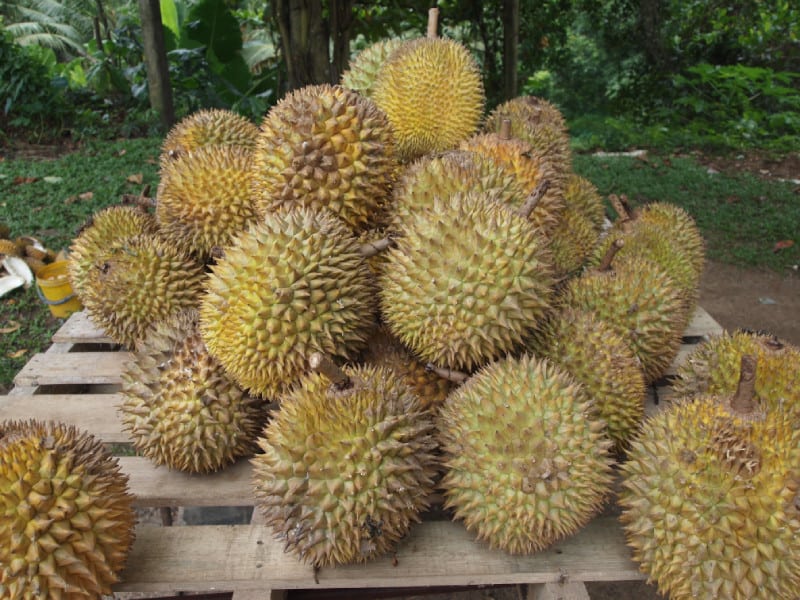Durian Facts
- Durian forms the term for the fruit of several tree species within the genus Durio. Currently, nine varieties of this unique plant produce edible fruit exist.
- However, only one of these gets exported internationally. The others continue to be sold and consumed locally only. The Durian remains rather distinctive among fruits.
- Most people know it for its size, intimidating outer layer, and rather strong odor. The strength of its scent actually led to the fruit being banned from public transportation, and many hotels, in Southeast Asia.
- Numerous cultivars now exist, and many of these now rank as more popular with consumers than the original species.
- This remarkable plant appears to be the most common in Indonesia.
Related Articles
Durian Physical Description
The trees of the various species of Durian usually attain heights of about 164 ft (50 m). The leaves of most varieties stay evergreen, and flowers typically appear in clusters, on larger branches.
Many species also produce fruit once per year, while others produce fruit twice per year. The Durian fruit averages 12 in (30 cm) in length, and 6 in (15 cm) in diameter. These often weigh around 7 lb (3.2 kg).
The shape of the fruit varies by species, and the spiny husk becomes either brown or green in color. The flesh of the fruit develops as either red or pale yellow in color.
Most individuals find the scent rather overpowering, and quite unpleasant.
- Kingdom: Plantae
- Phylum: Angiosperms
- Class: Eudicots
- Order: Malvales
- Family: Malvaceae
- Genus: Durio
Durian Flavor, Odor, and Uses
People usually find the contrast between the flavor of the Durian and the scent to be beyond description. The fruit also reportedly tastes delicious. In general, people also say that it has a flavor distinctively different from any other fruit.
The scent, on the other hand, remains considered by many to be rather abhorrent. Wild animals often detect the scent as much as 1 mi (1.6 km) away. This attracts the animals, to consume the fruit, and the seeds of the Durian then get spread by the animals.
Some also use the fruit to flavor a wide range of edibles. These range from candy to ice cream to fish. People also sometimes eat the Durian either raw or cooked like a vegetable.
Species Sharing Its Range
Check out our other articles on Dragon Fruit, Snow Leopard, Victoria Falls, Wonderful Wild Cats of the World, Gray’s Leaf Insect, Mou Waho Island, Swell Shark, Blue-lipped sea krait

